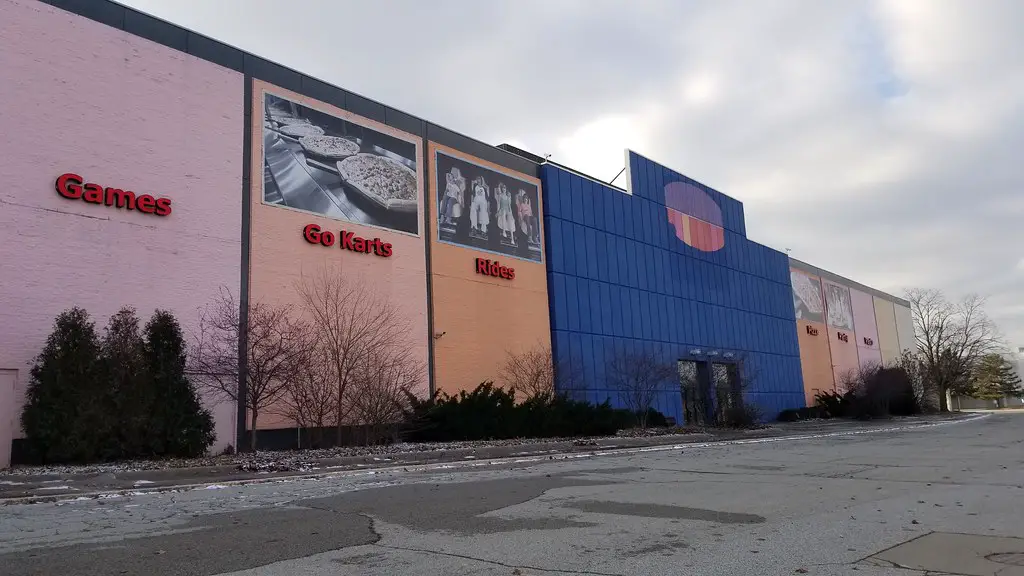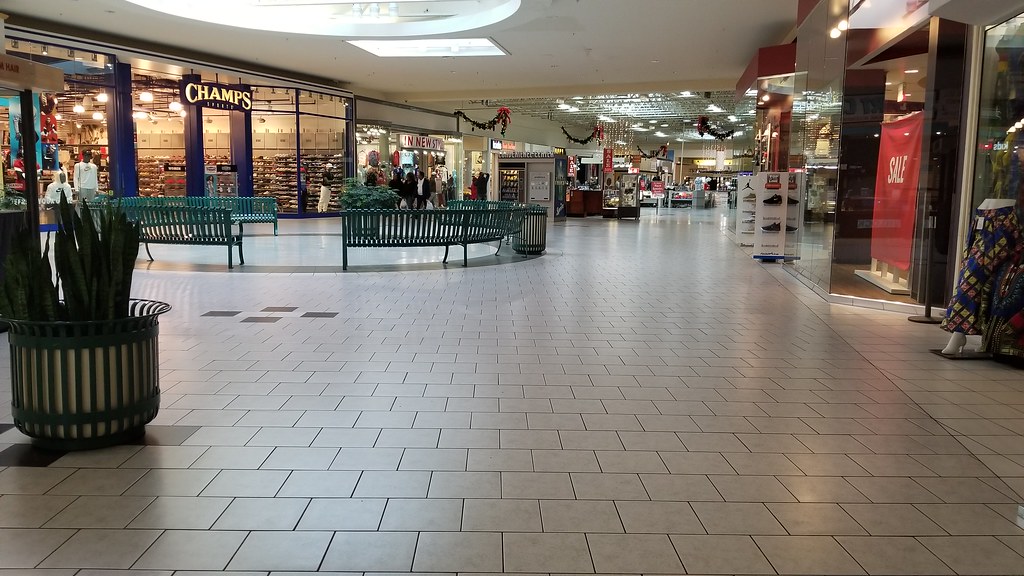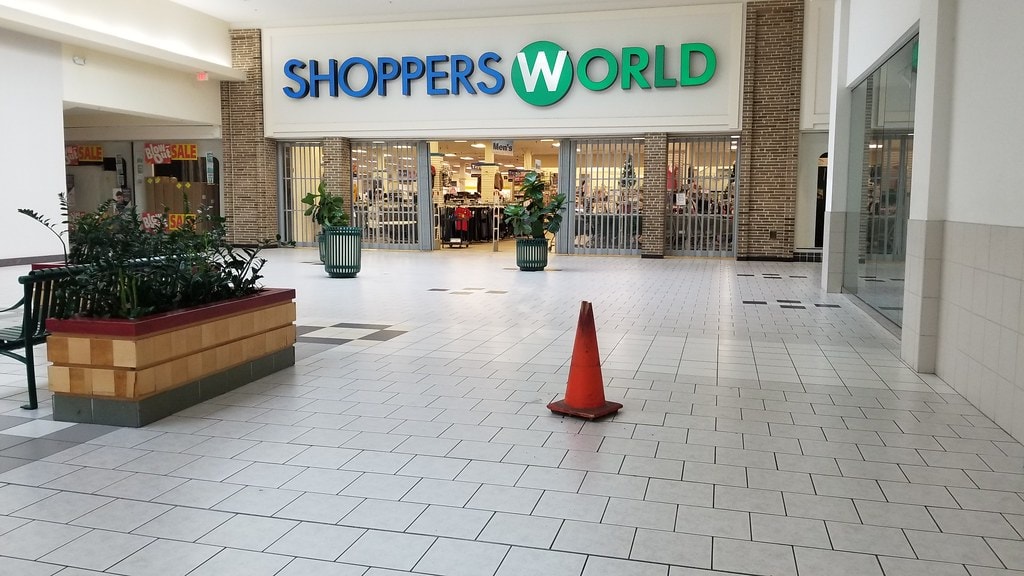The Dawn of Lafayette Square Mall
Lafayette Square Mall, a landmark in Indianapolis’s retail history, began its journey in April 1968. Developed by the visionary Edward J. DeBartolo Sr., this mall was not just a shopping center but a pioneering establishment in the American retail landscape.
Situated at 38th Street and Lafayette Road in Pike Township, merely two miles north of the renowned Indianapolis Motor Speedway, it stood as the first enclosed shopping mall in greater Indianapolis, heralding a new era in consumer experience.
Upon its grand opening, Lafayette Square Mall was a bustling hub of commerce and social interaction. It initially housed 90 inline tenants, offering the Indianapolis community diverse shopping options.
The mall’s architectural design encompassed over 1 million square feet of retail space under one roof on an expansive 80-acre site. This design was innovative and set a precedent for future regional shopping malls.
The anchor stores of Lafayette Square Mall were a testament to its commercial significance. JCPenney and Sears, two retail industry giants, anchored the mall’s south and north ends, respectively.
These stores were complemented by G.C. Murphy in the north wing near Sears, a Kroger grocery store in the south wing near JCPenney, and William H. Block at the center court, which opened a year later in 1969.
The presence of these retail heavyweights made Lafayette Square Mall a one-stop destination for a variety of shopping needs, from fashion and electronics to groceries and household goods.
In 1974, the mall underwent its first significant expansion, further cementing its status as a commercial powerhouse. This expansion introduced a sixth department store near Sears, broadening the mall’s appeal.
Ohio-based Lazarus and about eight new stores, including Radio Shack, joined the mall’s retail family. This expansion increased the mall’s size and diversity in retail offerings, attracting a wider demographic of shoppers.
In 1975, Lafayette Square Mall reached a significant turning point by tearing down the Kroger store linked to the mall.
This demolition paved the path for further expansion, notably featuring the addition of the Indianapolis-based L. S. Ayres near the south end, close to JCPenney.
This strategic addition and redevelopment reflected the mall’s adaptability to changing market trends and consumer preferences.
Lafayette Square Mall’s early years were not just about shopping; they were about creating a community space where people could gather, explore, and enjoy things to do in Indianapolis, Indiana. Its development spurred economic growth and set the stage for further retail ventures.
Lafayette Square’s success prompted DeBartolo to plan additional malls across Indianapolis, including Castleton Square in 1972 and Washington Square Mall in 1974, expanding his visionary retail empire.
As the years progressed, Lafayette Square Mall continued to evolve, adapting to the changing tides of commerce and consumer behavior.
However, its foundational years in the late 1960s and early 1970s remained a golden era, a time when it stood as a beacon of modern retail, a place of gathering, shopping, and entertainment for the people of Indianapolis.

Evolving Landscape and Competition
As the late 1980s and early 1990s unfolded, Lafayette Square Mall encountered a shifting retail environment.
Significant changes marked this period, most notably Lazarus’s acquisition of William H. Block. This move altered the mall’s retail mix and signaled a shift in the competitive landscape.
Additionally, the closure of G.C. Murphy, a key tenant since the mall’s inception, further underscored the evolving nature of retail trends and consumer preferences.
These changes indicated a broader transformation within the retail sector, where consolidation and competition were becoming increasingly prominent.
The mid-1990s brought new challenges to Lafayette Square Mall with the opening of Circle Centre in 1995. Circle Centre emerged as a formidable competitor in downtown Indianapolis, drawing shoppers with its modern amenities and diverse retail offerings.
This intensified competition prompted Lafayette Square Mall to respond strategically. In 1998, the mall underwent a significant remodel, a move aimed at revitalizing its appeal and retaining its customer base.
A notable feature of this remodel was the introduction of a racetrack-themed food court, an innovative concept designed to enhance the shopping experience and create a unique attraction for visitors.
However, the early 2000s marked a turning point for Lafayette Square Mall, signaling the onset of its decline.
During this period, several key anchor stores, which had been the cornerstone of the mall’s retail strength, closed.
Montgomery Ward, one of the original anchors, liquidated in 2001, leaving a significant void in the mall’s tenant lineup.
Lazarus closed its doors in 2002, diminishing the mall’s status as a premier shopping destination. These closures were not isolated incidents but part of a broader trend affecting malls nationwide.
The departure of these anchor stores marked a critical moment for Lafayette Square Mall, as it struggled to adapt to the rapidly changing retail landscape and faced an uncertain future.

The Decline of a Retail Giant
The post-2005 era marked a significant downturn for Lafayette Square Mall, as it witnessed the withdrawal of major brands that had been its backbone for decades.
Notable departures included JCPenney and Old Navy, two of the mall’s key retail anchors. Their exit left a substantial void in the mall’s offerings and signaled a broader shift in the retail landscape.
As these national chains departed, they were increasingly replaced by discount stores and local merchants.
This transition reflected a change in the mall’s clientele and market positioning, moving away from being a hub of major retail brands to a center dominated by smaller, less-known entities.
The shift drastically altered the mall’s character and appeal, contributing to a steady decline in foot traffic and sales.
In 2007, a pivotal change in ownership occurred when Simon Property Group, a major player in the retail real estate market, sold Lafayette Square Mall to Ashkenazy Acquisitions Corp.
A few months after its acquisition, Lafayette Square Mall embarked on a fresh remodeling phase, breathing new life into its structure.
This renovation included a redesigned entrance, enhancing the mall’s welcoming appeal. A new kiosk featuring Maggie Moo’s, Pretzelmaker, and Great American Cookie Co. was introduced, offering shoppers a delightful mix of treats.
The mall also welcomed Shopper’s World, an East Coast chain known for its affordable pricing, which is nestled in the space once occupied by JCPenney.
Adding to the entertainment quotient, Xscape, a facility packed with various games, opened its doors to provide a fun-filled experience for visitors.
However, despite these promising updates, October 2008 and January 2009 brought unexpected news: Sears and Macy’s, two of the mall’s major anchors, announced their closures, casting a shadow over the newly made renovations.

This transition marked the beginning of a period of neglect for the mall. The decline in the mall’s physical state and the changing retail mix further eroded its attractiveness to shoppers and prospective tenants.
This played a critical role in accelerating the mall’s decline, as it failed to adapt to the evolving retail environment or invest in necessary upgrades and renovations.
The final years of Lafayette Square Mall were characterized by a continued loss of tenants and diminishing relevance in the Indianapolis retail scene.
A significant blow came in 2019 with the closure of Burlington Coat Factory, one of the last remaining anchor stores.
In a bid to fill the void left by Burlington, Shoppers World shifted into the space, but this move was more of a stopgap than a revival.
The mall’s transformation from a bustling retail hub to a shadow of its former self was nearly complete.
The departure of Burlington Coat Factory and the reshuffling of remaining tenants like Shoppers World marked the end stages of Lafayette Square Mall as a significant player in the retail market, leading to its eventual closure and the end of an era in Indianapolis’s retail history.
The Transformation Plans
In 2021, a new chapter began for Lafayette Square Mall with its acquisition by Sojos Capital. This change in ownership brought fresh hopes and ambitious plans for the mall’s transformation.
Sojos Capital announced the ‘Window to the World’ redevelopment plan, envisioning the mall as a mixed-use landmark destination.
This plan aimed to revitalize the mall into a vibrant activity center that blended retail, dining, entertainment, and community-focused spaces.

The ‘Window to the World’ concept was a bold move, signaling a shift from the traditional mall format to a more dynamic and multifunctional space, reflecting the evolving needs and preferences of the modern consumer.
However, the path to transformation was challenging. In August 2022, the mall closed its doors to the public to undergo the planned renovations.
This closure was a necessary step in the redevelopment process, intended to allow for a comprehensive overhaul of the mall’s infrastructure and aesthetic.
Yet, the closure extended beyond the anticipated timeframe, and the mall did not reopen as planned.
This delay in reopening led to a reevaluation and subsequent adjustments in the redevelopment strategy.
The extended closure period highlighted the complexities and unforeseen challenges of repurposing a large-scale retail space, especially one with Lafayette Square Mall’s historical and cultural significance.
As of January 2024, Sojos Capital unveiled an updated plan for the mall, now named ‘The Square.’ This revised plan represents a more expansive and diverse vision for the mall’s future.
‘The Square’ encompasses many facilities and attractions, including dining options, shopping outlets, housing units, a concert venue, a film studio, a school, an athletic facility, and office space.
This multifaceted approach aims to create a self-contained community hub that offers a variety of experiences and services in a single location.
Including a school and athletic facility, in particular, indicates a focus on community engagement and wellness.
At the same time, the concert venue and film studio suggest a commitment to cultural and entertainment offerings.
‘The Square’ is poised to be more than just a shopping center; it’s envisioned as a vibrant, dynamic space that caters to a wide range of needs and interests, potentially setting a new standard for mixed-use developments.
Bundle your hotel + flight together to save more on your next trip! Book now at Expedia.com
